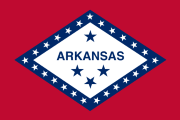
|
RC
|
||
|
Reading Fundamentals: Reading Fundamentals includes skills that can be applied to literary and informational texts.
|
||
|
|
||
|
|
||
|
Central idea
Theme
Supporting evidence
Text development
|
||
|
Central idea
Theme
Supporting evidence
Text development
|
||
|
Text evidence
Text evidence in literary passages
Arguments
Text evidence in nonfiction passages
|
||
|
Text evidence
Text evidence in literary passages
Arguments
Text evidence in nonfiction passages
|
||
|
Literary texts
Informational texts
|
||
|
Literary texts
Informational texts
|
||
|
Reading Literature: Reading Literary includes skills that are specific to literature.
|
||
|
|
||
|
|
||
|
|
||
|
|
||
|
Reading Information: Reading Information includes skills that are specific to non-fiction texts.
|
||
|
Development of ideas in nonfiction passages
Arguments
|
||
|
Development of ideas in nonfiction passages
Arguments
|
||
|
Text development
Argument development
Analyze structure and development in nonfiction passages
|
||
|
Text development
Argument development
Analyze structure and development in nonfiction passages
|
||
|
Audience and purpose
Tone
Arguments
Rhetorical strategies
Persuasive strategies
|
||
|
Audience and purpose
Tone
Arguments
Rhetorical strategies
Persuasive strategies
|
||
|
|
||
|
|
||
|
Arguments
Supporting evidence
Logical fallacies
|
||
|
Arguments
Supporting evidence
Logical fallacies
|
||
|
W
|
||
|
Style: Writing style includes different types of writing for different purposes.
|
||
|
Organization
Thesis statements
Supporting evidence
Counterclaims
Logical fallacies
Transitions
|
||
|
Organization
Thesis statements
Supporting evidence
Counterclaims
Logical fallacies
Transitions
|
||
|
Organization
Topic sentences
Development and support
Transitions
Formatting
Tone
|
||
|
Organization
Topic sentences
Development and support
Transitions
Formatting
Tone
|
||
|
Point of view
Descriptive details
Formatting
Word choice and usage
|
||
|
Point of view
Descriptive details
Formatting
Word choice and usage
|
||
|
Production: Writing production includes volume and clarity of writing and the writing process.
|
||
|
Audience and purpose
Organization
Development and support
|
||
|
Audience and purpose
Organization
Development and support
|
||
|
|
||
|
|
||
|
Organization
Revision
Editing
|
||
|
Organization
Revision
Editing
|
||
|
|
||
|
|
||
|
Research: Research includes identifying a topic, gathering information, and assessing sources.
|
||
|
|
||
|
|
||
|
V
|
||
|
Vocabulary: Vocabulary includes understanding and using words to communicate effectively.
|
||
|
Prefixes
Suffixes
Greek and Latin roots
Foreign words and expressions
Vocabulary in context
Word choice and usage
Reference skills
|
||
|
Prefixes
Suffixes
Greek and Latin roots
Foreign words and expressions
Vocabulary in context
Word choice and usage
Reference skills
|
||
|
Greek and Latin roots
Prefixes
Suffixes
|
||
|
Greek and Latin roots
Prefixes
Suffixes
|
||
|
Greek and Latin roots
Etymology
Vocabulary in context
Reference materials
Prefixes
Suffixes
Word patterns
Analogies
Word choice and usage
Figurative language
|
||
|
Greek and Latin roots
Etymology
Vocabulary in context
Reference materials
Prefixes
Suffixes
Word patterns
Analogies
Word choice and usage
Figurative language
|
||
|
Figurative language
Rhetorical strategies
|
||
|
Figurative language
Rhetorical strategies
|
||
|
L
|
||
|
Structure: Language structure involves correct use of parts of speech and creating sentences in speaking and writing, including how the arrangement of words within sentences impacts the meaning.
|
||
|
Dependent clauses
Compound-complex sentences
Conjunctions
|
||
|
Dependent clauses
Compound-complex sentences
Conjunctions
|
||
|
Phrases
Clauses
|
||
|
Phrases
Clauses
|
||
|
Conventions: Conventions involve the correct use of mechanics in writing.
|
||
|
Commonly misspelled words
Frequently confused words
Homophones
|
||
|
Commonly misspelled words
Frequently confused words
Homophones
|
||